A vision for waste: Prada Re-Nylon Project
Feb 13, 2020
Produced by National Geographic, What We Carry follows the NGOs and environmental conservationists helping Prada’s Re-Nylon Initiative at a time when climate change is of the utmost importance. Zeerak Khurram explores the video series.
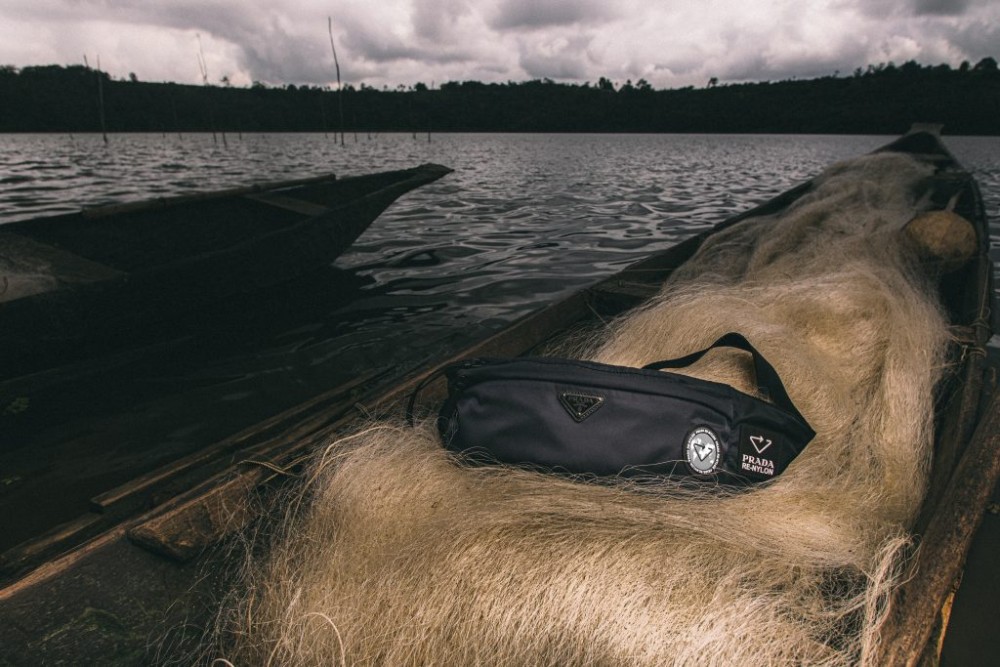
With Greta Thunberg being voted Time magazine’s Person of the Year for 2019 and the currently raging Australian bushfires, climate change has once again been brought to the forefront of our news cycles – that is, if it ever left. According to the UN, we have about 12 years left to cut down on carbon emissions before we pass the point of no return, meaning that if we fail to act, we may see natural disasters that are even worse than half of Venice being underwater.
Since the US pulled out of the Paris Climate Agreement in 2017, many people questioned whether governments were willing to do anything at all. Around the time that Thunberg was addressing the UN in 2019, Canada’s Justin Trudeau was signing a deal for the creation of a new pipeline through indigenous land – a move that was seen as not only culturally insensitive, but also environmentally unfriendly. Vladimir Putin’s response to Thunberg’s UN address may have been an indication as to what several heads of state were thinking at that time: yes, climate change is important, but there are more “pertinent” issues to focus on. Shortly after those comments, reports emerged from India and China about two of their major cities, New Delhi and Beijing, being engulfed in dangerously high levels of smog.
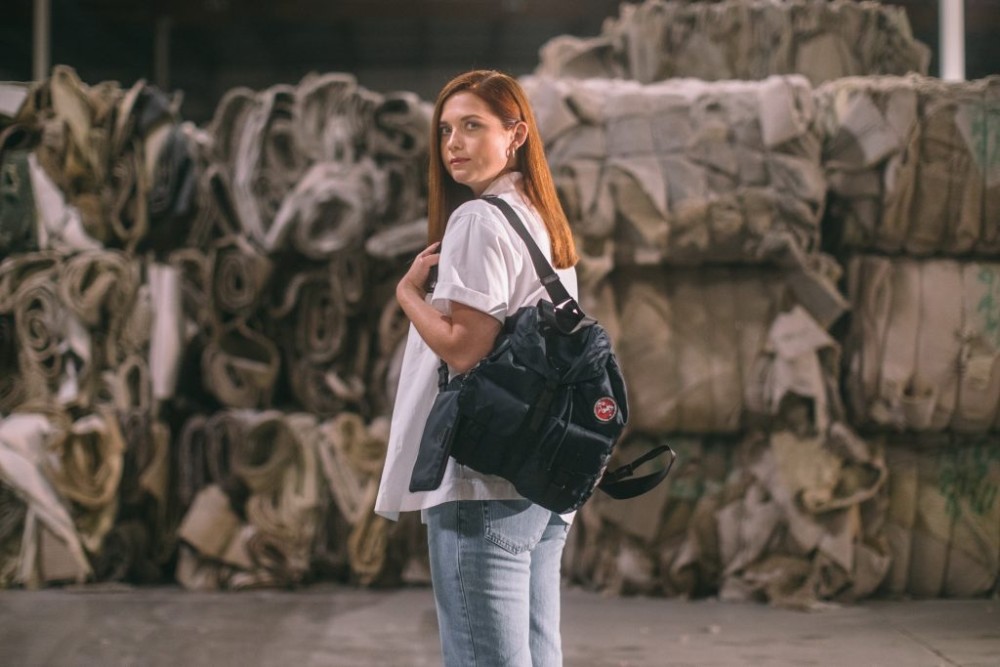
Smog is a natural by-product in any up-and-coming nation. More economically developed countries such as the UK, Germany and France experienced the same thing around the time that they were industrialising. With the growth of factories and industry, manufacturing processes are sped up and companies can churn out hundreds of products at a lower cost. One of the industries to have benefitted greatly from industrialisation is undoubtedly fashion.
Historically, fashion has not been environmentally friendly. According to a Forbes article published in 2018, fashion waste makes up about four per cent of the annual waste that goes to landfills. While some companies like H&M do have programmes that let you recycle your clothes, it isn’t enough – and may happen at the expense of further emissions. Of the estimated 92 million tonnes of solid waste created annually by the fashion industry, most of it is textile waste that’s left over from the production process. Fashion companies have recognised that the process must be fixed for the result to truly adhere to the Triple Bottom Line standard of sustainable manufacturing.
A few months before the August 2019 G7 meeting, French president Emmanuel Macron and 32 fashion and textile companies announced the Fashion Pact. Representatives from the companies met and officially signed the pact in October 2019; since then, the pool has grown to include a total of 56 signatories and 250 brands that aim to reduce the environmental impact of the fashion industry – a goal that has been on the agenda for many involved.
With younger generations becoming more environmentally conscious than the previous ones, many established luxury and retail brands have had to deal with increased scrutiny from a consumer base that is no longer just concerned with the end product. This has led to several companies including Adidas, Stella McCartney, Prada and H&M partnering with Econyl and its subsidiary, Aquafil. Based in Italy, Econyl specialises in using pre- and post-consumer waste such as carpets and fishing nets to produce regenerated nylon yarn. The aim is to kill two birds with one stone: to reduce fashion waste and to clear up major components of landfill sites. Prada, in particular, has gone one step further by documenting the production process with National Geographic. The five-episode series, titled What We Carry, takes you behind the scenes of Re-Nylon – a sustainability initiative in which Prada plans to replace all its existing fabric with upcycled nylon by 2021. The initiative was announced in the summer of 2019 with the launch of a Re-Nylon collection of six bags.
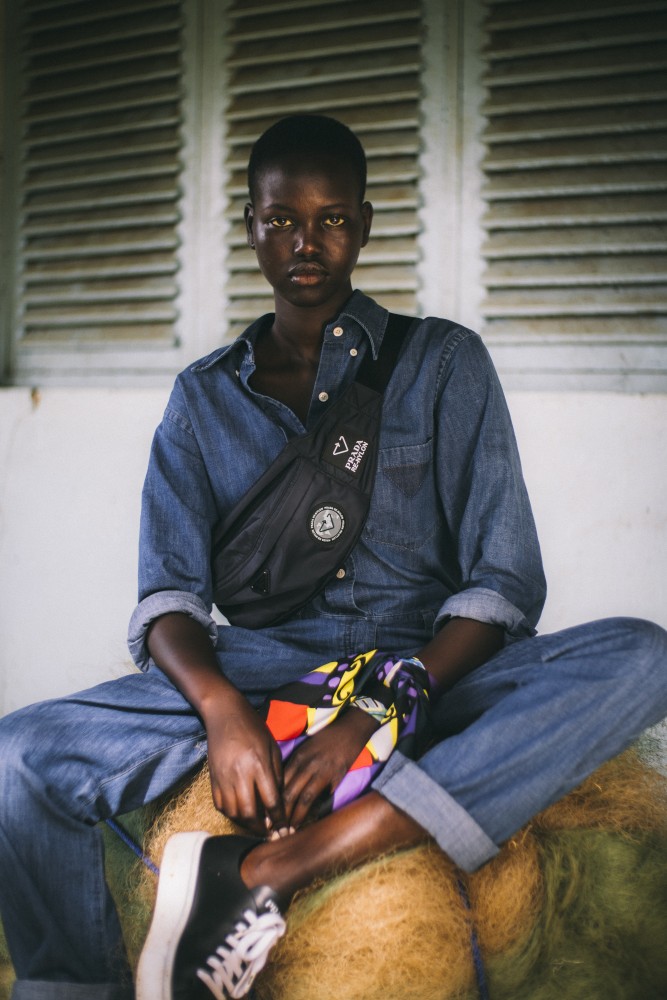
The second episode, hosted by Sudanese-Australian model Adut Akech Bior, BFA’s Model of the Year in 2019, at Lake Ossa in Cameroon in cooperation with Net-Works to retrieve discarded fishing nets
“I’m very excited to announce the launch of the Prada Re-Nylon collection,” says Lorenzo Bertelli, Prada Group’s head of marketing and communications. “Our ultimate goal will be to convert all Prada virgin nylon into Re-Nylon by the end of 2021. This project highlights our continued efforts towards promoting a responsible business. This collection will allow us to make our contribution and create products without using new resources.” According to Prada: “For every 10,000 tonnes of Econyl created, 70,000 barrels of petroleum are saved. This reduces environmental emissions of CO2 by 57,100 tonnes. By choosing to use Econyl, the impact of petroleum-fuelled nylon production on global warming will be reduced by 80 per cent.”
The series spotlights “the individual, the self – the notion that what each of us carry can affect the burden of the planet, for bad or for good.” Hosted by a different National Geographic Explorer and a prominent celebrity (known as a “Prada reporter”), each of the five episodes takes viewers to key sites and recycling plants across the globe. While most of the episodes hover around two and a half minutes in length, National Geographic has also written a number of articles to be read alongside them, adding to viewers’ understanding of the initiative, and what it means for communities and ecosystems around the world.
The first episode, hosted by Bonnie Wright (best known for her role as Ginny Weasley in the Harry Potter franchise) and National Geographic Explorer and creative conservationist Asher Jay, takes us to Phoenix, Arizona where we see carpets being recycled for Prada’s project. Amidst shots of carpets being wrenched out of dumps, Jay explains that around 16,000 tonnes of carpet are sent to landfill sites annually. The polyester in carpets makes it incredibly hard for them to decompose, with many remaining there for possibly centuries.
This is where Aquafil comes in. As explained by plant manager Juan Carlos Anota, Aquafil deconstructs the carpets and separates their core components. In the words of Jay, it’s almost the creation of a circular economy, since there is a great reduction in the amount of fashion waste. The series refers to the process as “real-life alchemy” that allows for the creation of Nylon 6, which can be used in almost every textile-based product imaginable.
Prada explains: “Econyl yarn is made of recycling discarded plastic that has been collected from landfill sites and oceans across the whole planet. The production process [consists of] gathering of waste materials: fishing nets, discarded nylon, carpets and industrial waste are sorted and cleaned to maximise the quantity of recuperated nylon; [then] regeneration and purification: through a chemical de-polymerisation procedure, the nylon waste is recycled right back to its original purity; [and finally] at production plants in Ljubljana, Slovenia and Arco, Italy, the recycled materials are re-transformed into polymers and threads through a new polymerisation process.”

Australian actor Alex Fitzalan discusses the damage that humans have done to the world’s oceans in the third episode 
The fourth episode takes place in China and Chinese actor Wei Daxun discusses the harmful effects of the current way clothing is manufactured globally
While the first episode focuses on the upcycling of carpets, the second follows Sudanese-Australian model Adut Akech Bior, BFA’s Model of the Year in 2019, and National Geographic Explorer and freshwater conservationist Joe Cutler to Lake Ossa in Cameroon, where the material of choice is fishing nets. Set against the soft ambient sounds of a live recording of a Lake Ossa resident, the pair walk through the Lake Ossa Wildlife Reserve as Cutler recounts how the people living in the area are able to balance development and conservation.
One of the ways in which they are able to do so is by working with Net-Works to retrieve discarded fishing nets from Lake Ossa. Net-Works functions on a model created by the Zoological Society of London (ZSL) and Interface. ZSL has been present in the area since 2014 and works not only with the Lake Ossa Wildlife Reserve, but also with the nearby Douala-Edéa Wildlife Reserve near Lake Tissong.
In an interview, Christian Kongte, the Net-Works manager at Lake Ossa, explains that fish in the lake tend to get caught in the leftover nets, threatening biodiversity in the area and adding to pollution. Net-Works employees go out onto the lake to collect the nets and bring them back to land to be compacted by a special machine. They can then be resold and turned into Econyl thread, thanks to Aquafil, and the money generated is used to send families to school. ZSL and Net-Works have recorded six tonnes of discarded fishing nets that have been removed to date.
Fishing nets themselves are a problem all over the world. Forty-six per cent of the Great Pacific Garbage Patch is old fishing nets and other abandoned fishing gear. This type of leftover gear has been dubbed “ghost gear” by conservationists and oceanographers, and poses a great threat to marine life. It seems apt that episode three of the series tracks this phenomenon with Ghost Fishing New Zealand, founded by Rob Wilson, which tries to remove harmful ghost nets from the seabed.
Beautiful scenes of tropical fish and corals are juxtaposed with the grimy, tangled bits of old nets. Underwater shots show the nets, slightly green with algae, covering parts of reefs as tiny fish skirt around, trying to avoid being caught up in its folds. Bundles of frayed ropes are shown lining the seabed, wreaking havoc on the ecosystem.
Australian actor Alex Fitzalan and National Geographic Explorer Asha de Vos are our hosts as they discuss the damage that humans have done to the two per cent of the world’s oceans we have had a chance to explore and understand. De Vos, in her line of work as a marine biologist and founder of the non-profit Oceanswell, has seen dolphins and whales with entanglement scars from being caught up in ghost nets. Wilson confirmed that some can be as long as five kilometres in length and can trap a whole host of marine creatures.
Ghost Fishing New Zealand has a group of dedicated volunteers that take time out of their lives to locate and retrieve these nets, often in areas of the ocean with very low visibility. Wilson also notes that all volunteers get training as to how to deal with underwater conditions and any dangerous situations they may face. Once nets are brought to the surface, they must then detangle any dead marine life unfortunate enough to swim into the death trap.
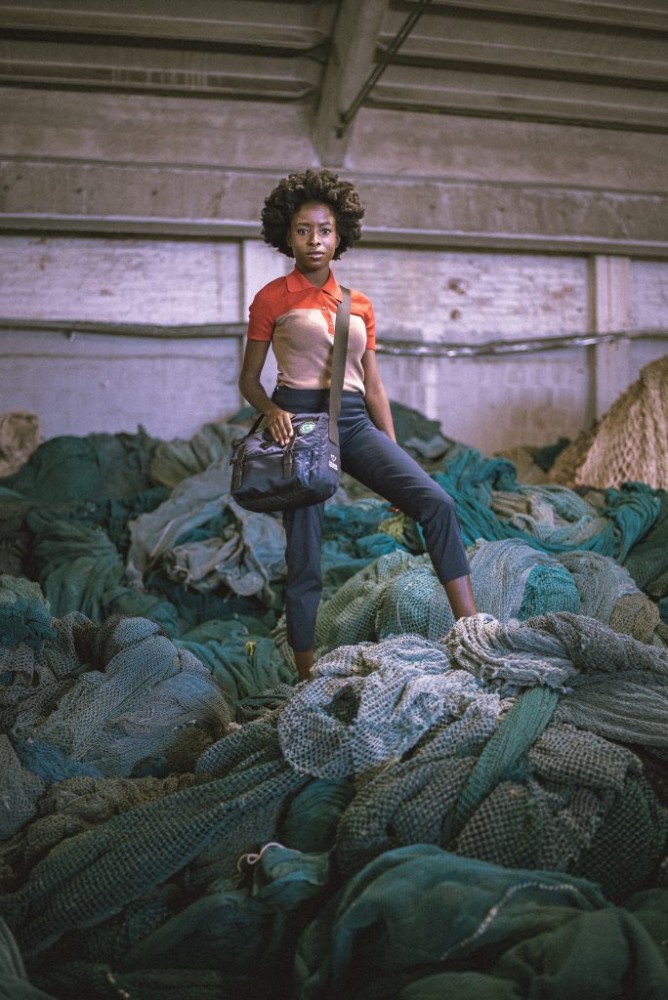
Unlike the Net-Works project workers, they’re not paid for their time. They do it as a way of contributing to the Healthy Seas Initiative, co-founded by Aquafil. In the third episode, marine biologist Serena Cox explains that the initiative, begun in 2013, has successfully removed around 500 tonnes of ghost nets and gear from the world’s oceans. Once collected, the nets are then taken to Europe, where Aquafil takes over and recycles them into Econyl thread for Prada to use.
With the amount of material available to be recycled for the Re-Nylon Initiative, it’s amazing that Aquafil has been able to carry out all of the processes itself. The company has also managed to persuade clothing factories such as Parawin in Ganzhou (in China’s Jiangxi Province) to partner with it and send its discarded textile cuttings straight to the Aquafil plant in Shanghai, rather than letting them go to a landfill site or a dump first.
Actor Wei Daxun and National Geographic Explorer and photographer Hannah Reyes Morales look at this type of pre-consumer waste in episode four. In 2019, a Time article documented how China is the world’s largest emitter of greenhouse gases in the apparel sector and the ways that the country is now trying to rein in companies that breach the carbon emission limits. Morales explains that one-third of all garments come from China and 15 per cent of the materials used can end up in landfills, adding to the pre-consumer waste associated with the fashion world. In 2017, Parawin set up a recycling system in its factory to collect textile waste to send to Aquafil.
Morales and Daxun note that not only does the manufacturing process for clothing companies need to become more sustainable but also that bigger brands have to lead the change. Aquafil, for its part, hopes that more companies will partner with it as Parawin has done. It’s important to note, however, that while many environmental agencies recommend that companies use recycled PET or polyethylene terephthalate for their products, many prefer to opt for the less-expensive process of upcycling nylon that can be done “ad infinitum” and be less of a financial liability.
The final episode of the series takes us to Aquafil’s Julon plant in Slovenia. Poet and activist Amanda Gorman and National Geographic Explorer Arthur Huang interview the president of Aquafil and the creator of Econyl, Giulio Bonazzi, about how Slovenia has become the upcycling capital of the world. The plant in picturesque Ljubljana sees a total of 40,000 tonnes of waste that needs to be recycled.

Prada bags created from Econyl, a regenerated nylon yarn produced by using pre- and post-consumer waste such as carpets and fishing nets 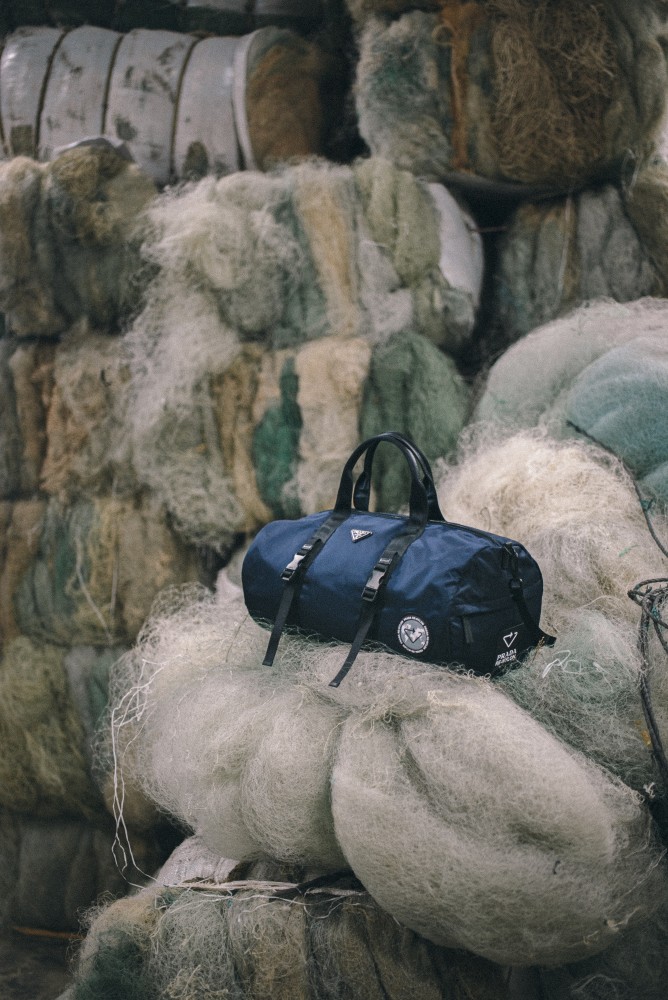
Prada bags created from Econyl, a regenerated nylon yarn produced by using pre- and post-consumer waste such as carpets and fishing nets
Bonazzi walks Gorman and Huang through the regeneration process that ensures that Re-Nylon is just as pure as virgin nylon without the use of petroleum. He notes that among the technical challenges faced by upcycling or recycling plants, one of the biggest is having to change the mind sets of companies and consumers regarding the discardable nature of products. This is an opinion echoed throughout the series – that both manufacturers and buyers are just as responsible for waste, and that we as a people should be more concerned with the way that our clothes are made.
The idea is that the more consumers are aware, the more the company is scrutinised. Climate change and sustainability are already great points of interest with younger consumers, and since they’re also likely to be accustomed to the concept of “cancel culture”, brands will have to listen. What We Carry and the related National Geographic articles is a gateway through which they can start exploring how many companies conduct themselves.
The interesting thing about this series is that even though there are numerous Prada product-placement shots of its Re-Nylon bag line, the focus is much more on the harsh reality of how clothes are made. Having National Geographic produce the series may have impacted the way that the story plays out, but in a sense, What We Carry is also Prada airing out its own dirty laundry and the way that its manufacturing process looked before. Prada’s tagline to end the series is: “Recyclable, renewable, responsible. Re-Nylon”. It’s as though the brand has been reborn in the world of sustainable fashion.



























